https://www.facebook.com/ekanikapilakakou.kauaistyle
Monday, March 16, 2015
Turning Back the Pages
on the History of Hawaiian Music
Noelani – Pioneer in Hawaiiana
A rare introduction was delivered in Hawaiian by our local henna-colored hair Brit Jodi Ascuena who followed her fluent Hawaiian language delivery with an English translation for those of us who don’t speak Hawaiian.
“This is an amazing woman who?s going to be coming up next.
She?s a pioneer in the art of Women?s Lua and a member of Pa Ku?i A Lua. Since the late 1950’s she has been teaching ?ukulele, hula, Hawaiian language and culture as part of the City & County of Honolulu program.
She formed the musical quartet Leo Nahenahe Singers in 1963. In 2002 they performed at the Hawai’i Theatre as part of Garrison Kiellor’s Prairie Home Companion show for PBS. In 1964 she and Ka?upena Wong (the famous chanter) were the very first Hawaiians to perform at the Newport Folk Festival.
In 1971 she joined the Hawaiian Music Foundation and coordinated the first Hawaiian Music Conference and the Slack Key Falsetto and Steel Guitar concerts held on all Islands. Additionally, she was instrumental in starting the Na Mele Program that is aired on Hawaii Public Television where, as co-producer, she helped to develop six half-hour shows still being aired today.
Together with Lokomaikai Snakenberg and Mehealani Pescaia, she developed the “Kupuna” program in all of Hawaii?s public schools in 1980. This program is still going strong with kupuna sharing their knowledge of Hawaiiana with the children of Hawai’i. She was also part of the 1999 Hawaiian Music hall of Fame Education Committee that developed the E Mele Kakou program for the elementary school curriculum.
Having spent a lifetime working on the advancement of Hawaiian Music and Culture, she received a Lifetime Achievement Award from the Hawai?i Academy of Recording Arts in 2002. How deserving of that award is she.
Noelani is a storehouse of forgotten songs of old Lana’i; she had been learning and documenting the old songs, or mele ‘aina, since the 1950’s. In 2010 a Maui group documented Noelani’s sharing and passing on the music of old Lana’i to the people of Lana’i at Ko’ele.
http://vimeo.com/14246253 She has been learning and preserving old songs from other communities.
Together with Samuel Elbert, she is co-compiler of the 101 Hawaiian Songs in the book “Na Mele O Hawai’i Nei”, a small treasure that came out in 1970 long before the blue Na Mele Songbook. She is currently working on a new book of 26 Hawaiian songs with background on the composer, lyrics, translation, and a CD of the music.
She?s famous throughout the entire Hawaiian island chain.
Oh, the sheer beauty of her sweet voice! She?s accompanied here today by her grandson, Ka’iola Farin. Let?s put our hands together for Noelani Kanoho Mahoe.”
I believe that Aunty Noelani is a force of nature and moves to right any wrongs or start something that is lacking or needs attention. That is how she managed to start the Kupuna program which is now a part of the public school system in Hawai’i and the Na Mele program, a great way to enjoy Hawaiian Music while sitting at home in front of your TV. She even wrote to the Kaua’i County Council and “letters to the editor” at The Garden Island about the importance of taking care of the Alekoko “Menehune” Fishpond which has become overgrown with mangrove and in a few years will be no more if no action is taken.
It’s hard to get through a conversation with her without being corrected for my sloppy pronunciation of Hawaiian words. She is a stickler for correct pronunciation. She even made sure that our audience knew how to pronounce ‘ukulele, NOT “yuke” or “yukalele”. What is “uku” she asks. “Fleas!” came the answer. What is “lele”? “Jumping!” came the answer. “Yes! ‘ukulele is ‘Jumping Fleas’!” Another correction that came to her mind was that many songs refer to the Mokihana berry as “pua” or “flower” but it is supposed to be “hua” because it is a berry and not a flower. She is really old school; she reminds me of my Mom.
I had a hard time arranging for her to be at EKK because she does not do email and each time I called her she was away at hula conferences in Mexico, in Australia and in New Zealand. She really gets around a lot for an octogenarian. “I might as well travel while I still can!” Smart woman.
Guest Artist Sean “Olanui” Robbins
Sean Robbins of Kona, born and raised in Puna on Hawai’i Island, shared his original compositions on his first and newly released CD entitled “Olanui”. His first visit to Kaua’i was in 2011 when he attended the Garden Island Arts Council’s Koke’e Haku Mele Camp at the tender age of 16 as a guest of several Kaua’i “aunties”. His second trip to Kaua’i was to attend the Kaua’i Music Festival. His debut at EKK is his third visit to the Garden Island. “I think I’m moving here!” he joked.
Just 21 years old, he has been seriously composing his own haku mele (Hawaiian poetry) compositions and playing at gigs on his own island, on Maui and on ‘Oahu. This is his first gig on Kaua’i and he hopes to share more of his music with the Kaua’i audience in the near future. He was taken under the wings of the famous musical ‘ohana, the Keli’iho’omalu’s in Kaimu, Kalapana. Sean loves the “old style” of Hawaiian music taught by kupuna. He had been trying to put out his first CD for years but he kept changing songs, changing arrangements, changing this, changing that until slack key master Cyril Pahinui took him under his wing and got him into the recording studio and told him “We’re going to do it in one take; if we don’t get it right by the second time it’s not all right.” Sean managed to complete his first CD in several intense sessions. He appreciates his mentor Cyril for his old school approach to performing Hawaiian music. Sean’s unique style of progressive slack key is a harmonious blend of all his influences delivered nahenahe style in his melodious crystal clear voice.
With a minimum of wala’au, Sean packed eight songs into his half hour on stage. He sang the popular classic Aloha Ka Manini and Pu’uanahulu about a place in Kona where only a few houses and an old Hawaiian church still stands. He sang one of his favorite songs, Pau’oa Liko Ka Lehua, for Ka’iola Farin who lives in Pau’oa. Kaua is his original falsetto composition in his album played with a tuning he learned from the Kaimu family called C-something. Simple and beautiful. Ka Lehua was his first song written several years ago at the Kaua’i Music Festival right here at the beach of the Kaua’i Beach Resort; it speaks of the lehua blossoms and the hala groves in Puna. He stepped up the pace with the lively He U’i and Hi’ilawe, two well-known classics. Kuahine is a new song that he completed just that morning while sitting high on the balcony of my painting studio in Niumalu overlooking the banana grove; the lyrics are about the famous rain in Manoa but because Kuahine can also mean sister, the song actually is about the love of his sister
Kanikapila style sharing
Noelani shared an evening of music with a lot of audience interaction, with stories and lessons thrown in as it popped in her mind, and tossed them out the window as she encountered “senior moments” and could not recall what she was planning to share.
Aloha, a greeting in song, was taught to the audience by Noelani with her grandson Ka’iola on the upright bass.
Simple words for the audience – Aloha, Aloha Ai, AaaaLoooHaaaaaaaa – while she sang a catchy song about Aloha that was very likely taught to all the students in the schools.
She invited the audience to sing Maika’i Kaua’i by Henry Waiau, a very popular song with the female part and the male part. The female part was loud and strong, but the male part was a bit under represented. Put it all together and it sounded okay. That was probably the first Hawaiian song I learned while in college.
Ka’ililauokekoa composed by Henry Waiau was a song directly connected to her family. When her father passed away, she came across a program with this song on it. She discovered that her father had put on a play based on a legend which was read by the Judge Lyle Dickey at the Lihu’e Hawaiian Congregational Church on Saturday, June 18 1932, at 8:30 am. The choir director Henry Waiau had composed the song in response to the play. This was the song taught to the ‘ukulele circle so she asked the students to come up to the stage to play along while the audience sang the song.
Noelani was born in Kipu where the row of tall pine trees end. Her grandfather took his 8 mules daily to Kipu Kai; he often asked Noelani to go with him but she was not interested. Bill Kaiwa who grew up in Kipu Kai asked her to visit him so he could teach her his songs, but she procrastinated and never made the trip. On both counts she called herself “Lolo”, meaning stupid.
As a child she spent a lot of time in Koke’e because her Dad was working at the CCC Camp. Noelani loved the song Koke’e by Dennis Kamakahi. She said that whenever he saw her, he would play Koke’e so that she could get up and dance. Of course, always the teacher, she made sure that everyone knew the correct pronunciation of the first word in the song, “upu a’e” which everyone seems to pronounce “ku upu a’e” which is wrong. Of course, whenever Koke’e is sung, hula dancers come up to the stage, so the appreciative audience called the hula dancers for a hana hou. Noelani obliged with Beautiful Kaua’i when many hula dancers went up to the stage to dance with several different choreography. A request that Po’ai Galindo dance to Wailele o Nu’uanu brought her up to the stage for the graceful hula.
Ulupalakua, a great song about the ranch on the slopes of Haleakala was sung by Ka’iola Farin; what a great voice! His friend Ata Damasco taught him an extra verse about the beef with and without horns raised on Kaho’olawe, which is part of Ulupalakua. Yumi Teraguchi Locey and Mahina Baliaris treated us to their hula.
Po La’ila’i was composed by Mary Kawena Pukui and put to music by Maddy Lam. It was a song written for the May Day Pageant at the University of Hawai’i in 1952. Noelani had the privilege of dancing this hula at the pageant. Many hula dancers graced the stage with this popular hula.
Experiencing another senior moment, Noelani said,“I can’t think of the title but I will sing it anyway,” launching into the tricky lyrics of Pili Me ‘Oe written by Noelani’s favorite composer Lena Machado, the Songbird of Hawai’i. It means “Cling to me.” She also sang Ei Nei. Her Hawaiian speaking grandmother used to call her uncles “Hui! Ei Nei! Ala Mai!”
“Ei Nei” is a nice way of calling someone. She was invited by Lena Machado to learn her songs. . . something for which she is truly grateful.
On a trip to Lana’i, she saw an ancient fishpond from the air and wanted to visit that place, so she went to visit the last two living cowboys on Lana’i, Daddy Kawena Ai’oli and Kimo who took her there. Kimo was the most Japanese looking man you ever saw but when he opened his mouth, pure Hawaiian came pouring out. The story goes that he was left on the pier in Lana’i and was taken in by the Kaopu’iki family who raised him from infancy as a Hawaiian. Whenever they were having a party on Lana’i, they called her so she would jump on a plane and fly there to sing. She saw mangrove growing by the fishpond so she told them to get rid of it; nothing was done, so the fishpond is no more.
At the marae in New Zealand, the groups sing back and forth. She was invited to such a gathering where a roomful of Maori sang to her Kaualana Na Pua, Maori version of Terina. They asked Noelani to sing Terina back to them. Terina is a maori folksong by Tommy Taurima about a little girl Terina Pomare. She learned the song from an 8 year old child while she was in New Zealand; today that youngster is a college professor in Hastings. She ends every performance with the song Terina no matter where she is.
Hawai’i Aloha is the song with which we always end the EKK evening. Noelani said that she was responsible for starting the practice of ending the programs with this song at all the concerts she used to coordinate, but now she wanted to change that practice and end the programs with another song. However, she could not remember the other song, so the audience happily went ahead and started singing their favorite song to end the evening – Hawai’i Aloha.
If you have a disability and need assistance please email Carol Yotsuda at <giac05@icloud.com> for Monday events.
(s) Carol Kouchi Yotsuda, www.gardenislandarts.org — “Celebrating 38 years of bringing ARTS to the people and people to the ARTS”
E Kanikapila Kakou 2015 Hawaiian Music Program is funded in part by the Hawai’i Tourism Authority, the County of Kaua’i Office of Economic Development, and the Garden Island Arts Council supporters with support from the Kaua’i Beach Resort.
Garden Island Arts Council programs are supported in part by the State Foundation on Culture and the Arts through appropriations from the Hawai’i State Legislature and the National Endowment for the Arts.
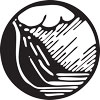


















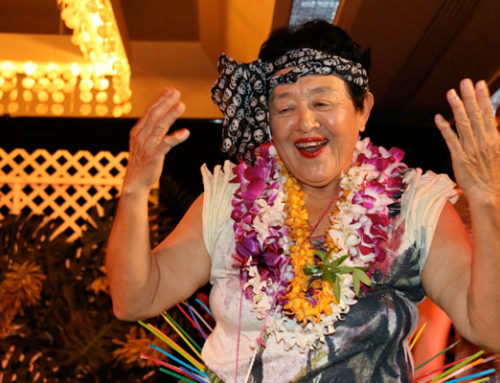
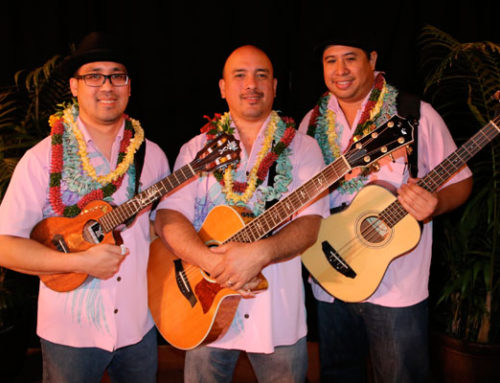
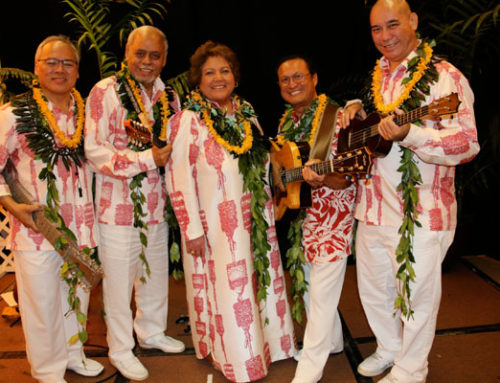
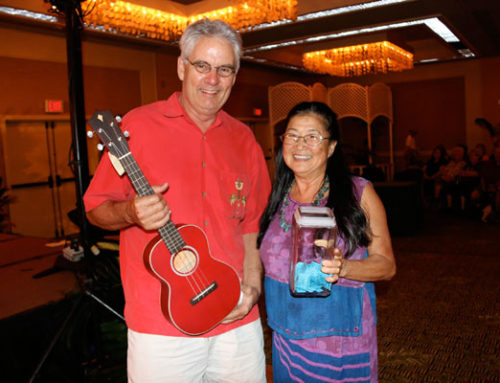
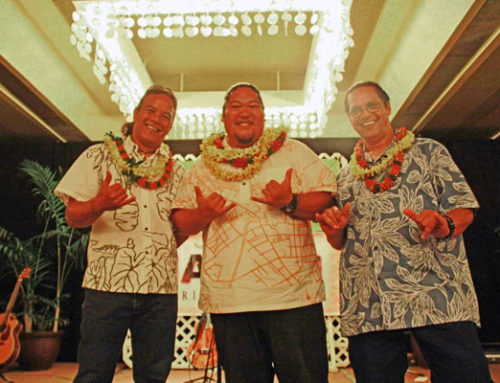
Leave a Reply